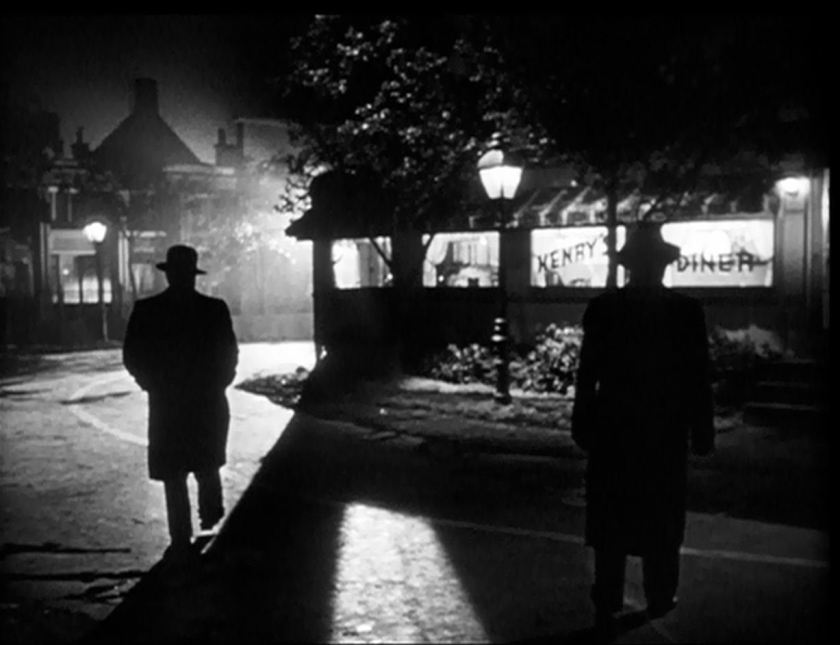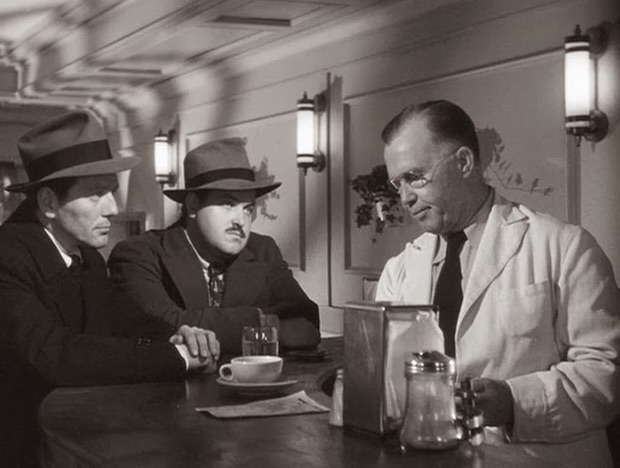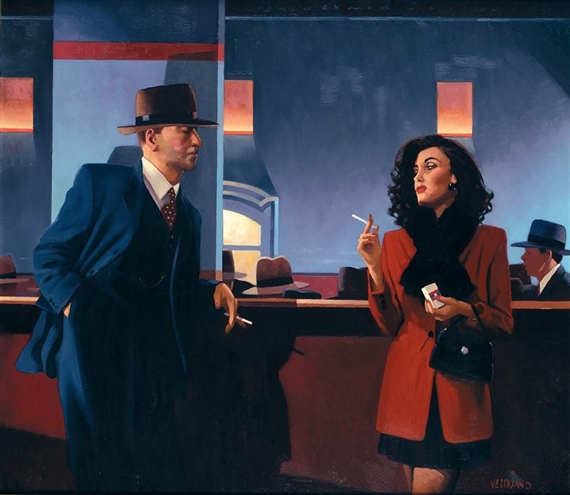![nighthawks_by_edward_hopper_1942 [2]](https://whatthehellisart.files.wordpress.com/2019/05/nighthawks_by_edward_hopper_1942-2.jpg?w=840)
Edward Hopper was one of the USA’s foremost 20c realist artists. He worked in oils, watercolour, and etching. The painting above, Nighthawks from 1942, is a sparse study of late-night life in an American city. There is very little that fixes the place, although it is said to resemble Hopper’s neighbourhood of Greenwich Village in New York. The street is empty, there are no street signs, no parked cars with telltale license plates; there is nothing in the neighbouring shop windows and no names above their frontages, except for the faded gilt above the diner and the suggestion that cigars can be bought here for five cents. The only illumination thrown onto the outside environment comes from the yellow-white lighting inside the diner. Three customers seem motionless. One man has his back to us – he is a total enigma, though he seems to be in the process of raising a glass. Our eye is drawn to the second man, the woman, and the waiter; the latter seems to be the only figure that hints animation, as he bends to attend to something we can’t see, below the counter-top. “Can I get you folks anything else?”
![nighthawks_by_edward_hopper_1942 [detail]](https://whatthehellisart.files.wordpress.com/2019/05/nighthawks_by_edward_hopper_1942-detail.png?w=840)
The urns sit there like Flash Gordon spaceships on a launching pad, as motionless as the couple – if they are a couple and not simply two people juxtaposed by chance. Their coffee is untouched. The man, with chiseled features and an aquiline nose beneath his fedora, holds but does not smoke a cigarette. The woman, her face taking on an Elizabethan white-lead hue under the lights, is staring at what might be a much-folded dollar bill, hinting that she might be a sex worker, though nothing in this painting can be taken at face value. If she is simply offering it to the waiter in payment for her coffee, she is doing so without making eye contact. Despite the brown of the woodwork, the deep blues, the yellow of the wall, and the scarlet of the woman’s dress, the painting evokes one word – Noir.
The atmosphere is one not so much of ennui but of tension and menace, which mood-creation and emotional content draw the principles of expressionism into Hopper’s realism. Who is going to move into shot (I use that term deliberately)? If anyone moves, will they shatter the immobility? Four years after this painting was produced, a movie adaptation of Ernest Hemmingway’s short story “The Killers” was released. A diner features prominently in that film, and although that particular eatery is in a small town, not a big city, and there are differences in the setting, I am always struck by the similarity of the angle in which two menacing figures approach it. Are viewers of the painting supposed to imagine themselves – coat collar turned up, fedora brim turned down – approaching the diner’s oasis of light with the soft tread of hired hit-men?

I am not alone in drawing a comparison between the painting and the short story, as speculation has been made before that one influenced the other, and that the painting went on to influence the film. Hopper’s Nighthawks has often been emulated – I see an influence on some of Jack Vettriano’s work, in fact I consider Vettriano’s work to be largely derivative in any case – and sometimes parodied. Banksy added a drunken British football fan and a broken window, others have dropped the TARDIS into the scene, or Kirk and Spock from Star Trek. It is a painting as well-known and as iconic as the fedora hat itself.

Something that strikes me about the painting that I had not realised before, until comparing it to movie techniques and technology of the time, is that the freedom Hopper had, by virtue of his artistic medium, to select a canvas with a width-to-height proportion of approximately 2:1, has produced something that almost adumbrates the invention of cinemascope. But that was at least a decade away. The fact remains that Nighthawks is instantly recognisable, and quintessentially 1940s American. Accept no substitutes.

